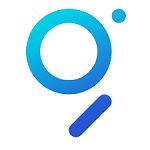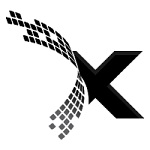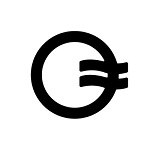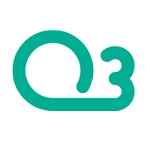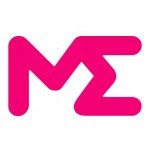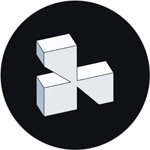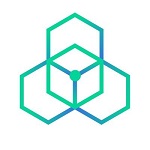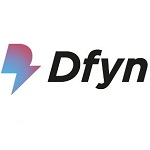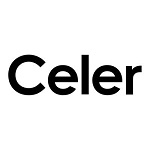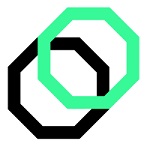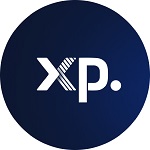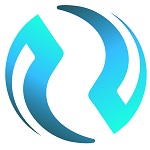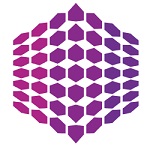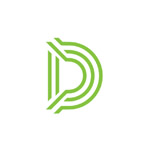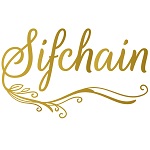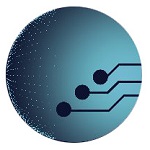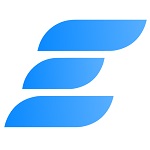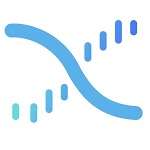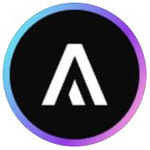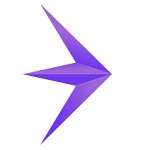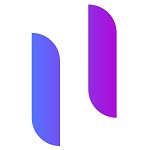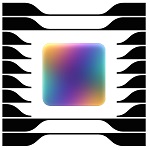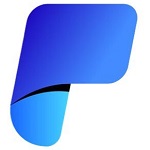Multi-Chain Platform
| Projects | Description | Interest lvl | ||
|---|---|---|---|---|
Pyth Network is a next-generation price oracle solution that aims to make valuable financial market data available on-chain for projects and protocols, as well ... | ||||
Osmosis is a decentralized peer-to-peer blockchain that people can use to create liquidity and trade IBC enabled tokens. Osmosis is an automated market maker (A ... | ||||
The Graph is an indexing protocol for querying networks like Ethereum and IPFS. Anyone can build and publish open APIs, called subgraphs, making blockchain data ... | ||||
Developers have made Web3 a multichain world – choosing different blockchains, optimizing for unique technical properties, use cases, and markets. Demand f ... | ||||
OpenOcean is a full CeFi and DeFi aggregator that aggregates mainstream DEXes on public chains and mainstream CEXes. OpenOcean helps user to find the best price ... | ||||
A leading crypto wallet, gateway to the Smart Economy. | ||||
Alpha Finance Lab is an ecosystem of DeFi products that will interoperate to maximize returns while minimizing risks for users. Alpha products focus on capturin ... | ||||
Magic Eden is the largest NFT marketplace on the Solana blockchain. It allows traders to buy, sell, mint and manage tokens, and it includes a thriving secondary ... | ||||
USUAL is a safe, transparent, and decentralized fiat-backed stablecoin issuer that redistributes ownership and value through the $USUAL token.Fundin ... | ||||
Discover the world of crypto like never before with Layer3. Our interactive Quests make learning and exploring crypto fun, engaging, and rewarding. Collect CUBE ... | ||||
zkLink is a trading-focused multi-chain L2 network with unified liquidity secured by ZK-Rollups. zkLink ecosystem connects various L1 chains and L2 networks tha ... | ||||
Orbiter Finance is a decentralized cross-rollup Layer 2 bridge with smart contracts only on the destination side and is Ethereum's future multi-rollup infrastru ... | ||||
Hyperlane is a permissionless interoperability protocol for cross-chain communication. It enables message passing and asset transfers across different chains wi ... | ||||
RedStone delivers frequently updated, reliable and diverse data for your dApp and smart contracts. RedStone is a data ecosystem that delivers fast and accurate ... | ||||
Dfyn is a multichain AMM DEX currently functional on the Polygon network. Dfyn nodes on various chains act as liquidity entry and exit points into the cross-cha ... | ||||
Celer Network is a leading layer-2 scaling platform that enables fast, easy and secure off-chain transactions for not only payment transactions, but also genera ... | ||||
Onomy is a decentralized layer one protocol built to provide rails for the $6.6tn/day foreign exchange market to plug into DeFi. It's a forex marketplace to tra ... | ||||
A multi-chain, smart-contract based DeFi solution. | ||||
Design, deploy & migrate NFT dApps without code on 10+ blockchains. | ||||
The Universal Layer-2 DeFi Protocol for Cross-Chain Derivatives Trading. | ||||
The Open Rights Exchange is a blockchain solely focused on decentralized identities, assets and rights. Unlike other chains, ORE connects web 2.0 identities to ... | ||||
Quarashi Network is a complete suite of solutions platform focused on providing the user with full privacy and anonymity. The core elements of the Quarashi Netw ... | ||||
Decentralized multichain perpetual swaps deployed on Polkadot, Cardano, & Polygon. | ||||
The Mobius protocol is a decentralized trading platform that can create and trade any synthetic asset, powered by our risk control algorithm. We offer low fees ... | ||||
Kyber design allows for any party to contribute to an aggregated pool of liquidity within each blockchain while providing a single endpoint for takers to execut ... | ||||
Derived is a decentralised multi-chain asset protocol giving users the access to trade Stocks, Commodities, Forex or Crypto on a single platform with unlimited ... | ||||
Sifchain’s mission is to be an omni-chain DEX. Sifchain, which inherits its infrastructure from Thorchain and Cosmos, will target 20–25 blockchains (such as ... | ||||
Cardence is a third generation Cardano focussed multichain decenetralized IDO platform. | ||||
CoreStarter is a cross-chain fundraising decentralized launchpad with a high-yield staking system and NFT Marketplace based on Solana, Polkadot, Ethereum, Binan ... | ||||
TransferMole is positioning itself as a game-changer in the $900 billion social commerce space, offering a privacy-focused, seamless way to get paid globally th ... | ||||
Electron Labs is an Ethereum-based universal ZK-proof aggregation layer, leveraging light clients and zero-knowledge proofs to uphold decentralization. Through ... | ||||
Altius brings modularity further to the blockchain execution layer. Altius plugs into any blockchain and seamlessly delivers high performance that unlocks Web2 ... | ||||
Helix is more than just on-chain financial infrastructure. It represents a new era for decentralized finance where ownership, performance, and transparency come ... | ||||
Vottun is a leading platform in web 3 APIs and provides the best developer tools to adopt blockchain technology, improving current business processes and creati ... | ||||
DuckChain is a blockchain project designed as an EVM-compatible Layer 2 (L2) solution built on The Open Network (TON) blockchain. Developed by TONSCALE LABS in ... | ||||
Pichi Finance is the first trustless points trading protocol, enabling users to trade points from their favorite protocols before TGE. Conventionally, points ar ... | ||||
Rage Trade is a multi-chain perp aggregator that works across all compatible chains (EVM L2s, L1s, AppChains, Cosmos, etc). Trade against deep unified liquidity ... | ||||
The mission of Agora is ambitious, yet straightforward. We aim to bring gamers and developers closer than ever, in an innovative environment where gamers commun ... | ||||
Timeswap Labs is building the first fully decentralized money market protocol within the DeFi ecosystem. We are solving one of the hardest problems in DeFi buil ... | ||||
Skate is an infrastructure layer that connects all major VMs, making cross-chain interactions seamless. Skate enables users to interact with applications from a ... | ||||
OT protocol is a novel DeFi protocol that allows single token liquidity provision. Swap, borrow, earn and trade perps with 0 slippage on zkSync, Aptos, and Sui ... | ||||
Magpie protocol is a cross-chain liquidity aggregator that enables seamless cross-chain swaps with near-instant finality and cost efficiency on many of the top ... | ||||
AltLayer Network is a system of highly scalable application-dedicated execution layers that derive security from an underlying L1/L2. It is designed as a modula ... | ||||
Sirius Finance is a cross-chain stablecoin AMM, attracting and locking tremendous value with low-slippage trading costs, attractive APY for LPs on Astar Network ... | ||||
Duet is the world's first multi-chain synthetic asset protocol with a hybrid mechanism (over-collateralization + Algo-pegged) that “sharpens” all assets to ... | ||||
The only multi-chain IDO platform providing tools and support throughout the entire project timeline. Offering an accelerator programme of pre-IDO services f ... | ||||
Hyperbridge is a cross-chain protocol that uses cryptographic proofs to create a decentralized and permissionless network of relayers, enabling secure transmiss ... | ||||
Adroverse is a project to build a decentralized metaverse on top of multi-chains networks like BSC, Solana, IPFS, Chainlink… | ||||
Pure Wallet Token (PWT) is the utility token that powers gas-free offline transactions, cold wallet features, and in-app services within the Pure Wallet mobile ... | ||||
HexyDog (HEXY) is a multi-chain meme coin with real utility. Join the crypto presale, support animal welfare, and use HEXY for pet store collaborations. | ||||
Multichain platforms & blockchains
The problem, such as the lack of blockchain interoperability at the beginning of the industry, limited a number of user capabilities, including data sharing and asset transfers between each other, effectively resulting in limited innovation and low efficiency of blockchain technology.
This led to the emergence of interoperability as a solution that allows different networks to seamlessly interact with each other by acting as smart contracts across different blockchains. In other words, such solutions are called Multichain platforms.
Notably, the concept of multichain was first developed by Ignite (Tendermint). In 2017, the developers launched the Cosmos protocol, which provides blockchain interoperability. By enabling the use of modular blockchain tools, Ignite aimed to make it easier for more people to build their own blockchain and create a powerful ecosystem under Cosmos.
What is Multi-chain
The term “multichain” describes a project with several interconnected blockchains. This architecture allows users of different blockchains to interact without necessarily exchanging assets.
Note that at the application level, Multichain platforms are DApps that support the operation of multiple digital assets and functional parameters of different blockchains simultaneously. For example, Metamask crypto-wallet is actually a multichain platform, because it allows you to store and manage digital assets from blockchains such as; Ethereum, Binance Smart Chain, Optimism, Arbitrum, Polygon and many other ecosystems.
Multichain platforms at the blockchain level deserve special attention.
Note that multichain blockchains are often referred to as Layer 0 blockchains.
It is Layer 0 blockchains that are the basis for building other networks such as Layer 1 or Layer 2. In addition, blockchains with broader functionality for cryptocurrencies, NFTs and other digital assets are being built on the basis of multichain platforms.
What are multichain systems for
Multichain solutions overcome the limitations of individual blockchains and facilitate collaboration between disparate blockchain networks. At the same time, the development towards multichain solutions creates opportunities for DApps developers to reach new audiences and ecosystems.
While previously all these blockchains were isolated from each other, multichain bridges allowed users to move data and assets between different blockchain networks. As the technology improved, this became even more seamless, allowing the use of new, previously unavailable, functionality and liquidity from other networks.
Core components of Multichain solutions
To understand the concept of multichain platforms, let’s look at how L0 blockchains work:
The L0 architecture contains many mechanisms that interact with each other. This makes blockchains more efficient in operation. Meanwhile, the consensus layer is the main part, which is responsible for new blocks and transaction verification.
The network layer is a secondary mechanism that is responsible for direct communication and connecting nodes to each other. The third key component is the virtual machines, thanks to which the security of smart contracts is achieved, as well as their efficient functionality.
A fundamental addition to multichain solutions is Modular Design. Modularity keeps the underlying blockchain architecture intact. In turn, this enables developers to add new features and modify them. In addition, multichain platforms are designed to be incredibly scalable, so they can handle a huge number of transactions.
We can now see that multichain platforms refer to blockchains that allow other applications and systems to be developed on top of them.
Importantly, the multichain approach preserves the ability to program the layers and applications that are built on top of the underlying consensus. This opens the door for other blockchains to implement different functionality and use cases. Among other things, this model enables individual blockchains to coexist within a single ecosystem.
An example is the Cosmos blockchain, which supports interoperability between blockchains without compromising their security and reliability.
Ultimately, multichain platforms have two key advantages:
- Allow for improved scalability of the blockchain network, as each parallel blockchain can process its own transactions and contracts without constraints, which can lead to a reduced load on the underlying blockchain.
- Allow for more flexible and specialized blockchain networks that can be used for different purposes and tasks.
Incidentally, the Huobi report cited the following four characteristics that should be at the core of a multichain system:
- Ability to be modular, rapidly create new blockchains, and rapidly evolve ecological blockchains;
- Capability to ensure efficient interoperability of the first layer blockchains in the ecosystem, including asset and information blockchains;
- The ability to guarantee the underlying security of the entire multichain network;
- The ability to interact and manage multiple sub-ecosystems within a multichain network.
In addition, it should be noted that the tools that are involved in crosschain systems play an important role in the formation of multichain platforms. Since it is the crosschain concept that is responsible for helping users to transfer assets between blockchains.
Examples of multichain platforms
- Polkadot
- Chainlink
- Avalanche
- AAVE
- Injective
- Uniswap
Conclusion
Over the years, the blockchain industry has realized the much greater importance of joining forces rather than fighting each other. This is why the concept of multichain solutions is being applied to address key challenges faced by existing blockchain platforms such as scalability, efficiency and interoperability.
As we can see, the trend of multichain solutions is the result of a long time of studying and developing blockchain technologies and by combining m Combining the advantages of both approaches, we can get a more robust crypto ecosystem, which is expected to influence the future of the blockchain industry by attracting more attention and users.



